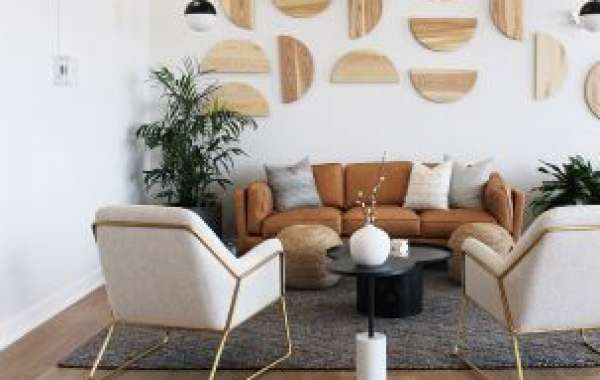Home renovation often poses a range of challenges and questions, especially when it comes to design choices. An experienced interior designer can streamline the renovation process by providing expert guidance, ensuring aesthetic coherence, and maximizing space efficiency. They bring a wealth of knowledge in color palettes, materials, and design trends, making them an invaluable partner in transforming a home.
Choosing to hire an interior designer can significantly influence the outcome of a renovation project. By understanding the client’s vision and lifestyle, a designer tailors solutions that not only meet practical needs but also enhance the overall ambiance of the living space. This partnership can result in a home that reflects personal style while incorporating functional elements.
Renovating a home is more than just a visual upgrade; it’s about creating a space that fosters comfort and reflects identity. With a professional interior designer, homeowners can navigate the complexities of renovation with confidence, ensuring that every detail aligns with their desired lifestyle. Engaging a designer allows for informed decision-making, leading to a successful renovation journey.
Understanding Home Renovation
Home renovation involves careful planning and execution to enhance living spaces. Key considerations include evaluating needs, budgeting, timing, and legal requirements.
Evaluating Renovation Needs
Before starting any renovation, assessing specific needs is crucial. Homeowners should identify which areas require updates or repairs. This can include upgrading kitchens, bathrooms, or improving energy efficiency.
Conducting a thorough inspection of the property helps spot structural issues, outdated designs, or functionality concerns. Prioritizing these needs allows for focusing on projects that genuinely enhance the home’s value and livability.
Involvement of professionals like interior designers can offer insights into potential improvements and cost-effective solutions. They can suggest changes that align with the homeowner's vision and lifestyle.
Setting a Realistic Budget
Establishing a budget is essential for any renovation project. Homeowners should start by determining how much they are willing to spend and what financing methods they will use.
A detailed budget should break down costs for materials, labor, permits, and unexpected expenses. Allocating an additional 10-20% for unforeseen situations allows for flexibility.
Researching market rates for materials and hiring reputable contractors can help manage costs. Tracking expenses during the renovation process also ensures alignment with the original budget, facilitating better financial decisions.
Choosing the Right Time to Renovate
Timing can significantly impact the renovation process and its success. Homeowners should consider seasonal factors, such as weather conditions, which can affect construction timelines.
Spring and summer are often ideal for outdoor projects due to better weather. However, indoor renovations can be tackled year-round. Homeowners must also factor in personal schedules and holidays to minimize disruptions.
Consulting with contractors about their availability can lead to better scheduling. Consideration of the local market can also influence timing; undertaking renovations when demand is low may result in cost savings.
Securing Permits and Legal Requirements
Navigating permits and legal requirements is a vital step in the renovation process. Most cities require permits for structural changes, electrical upgrades, or plumbing work.
Researching local regulations will ensure compliance and avoid fines. Homeowners should consult with local government offices or planning departments to get clear guidelines.
Hiring a professional contractor can simplify this process, as they often have experience with permits. They will handle application procedures and inspections, ensuring adherence to safety codes and regulations.
Working With an Interior Designer
Engaging an interior designer can streamline the renovation process, ensuring that aesthetics and functionality align seamlessly. Effective collaboration and clear communication are essential throughout each stage.
Selecting an Interior Designer
Choosing the right interior designer requires careful consideration. Begin by researching designers with a portfolio that resonates with the desired style. Review online testimonials and seek referrals from friends or family.
— Key factors to consider:
- Experience: Assess their previous projects.
- Specialties: Some may focus on contemporary designs, while others excel in traditional styles.
- Budget: Be clear about financial limits.
Schedule initial consultations with potential designers to discuss visions and gauge compatibility. Communication style and rapport significantly influence the partnership's success.
Collaborative Planning Process
Once a designer is selected, the planning process begins with meetings to discuss ideas in detail. They will typically conduct an assessment of the existing space to understand its nuances.
— Essential steps include:
- Needs Assessment: Define priorities, such as space usage and budget constraints.
- Concept Development: The designer presents design concepts based on client inputs.
- Timeline Establishment: A clear timeline helps align expectations and maintains progress.
Through regular check-ins, both parties will refine ideas. This collaborative approach fosters a cohesive vision and streamlines decision-making.
Design and Functionality
Interior designers create spaces that are not only visually appealing but also highly functional. They integrate practical needs into the aesthetic vision.
— Considerations for design and functionality:
- Flow and Layout: Strategically arrange furniture and fixtures to enhance movement.
- Space Utilization: Maximize usable space, especially in smaller areas.
- Lighting and Ambiance: Design should account for natural light and artificial sources to create mood.
The best designs balance beauty with day-to-day usability. An effective designer will suggest innovative solutions tailored to the specific environment.
Material and Finishing Selection
Selecting the right materials and finishes is critical for achieving the desired look and durability. An interior designer will provide guidance based on functionality and style.
— Important aspects to explore include:
- Sustainability: Consider eco-friendly materials that provide a lower environmental impact.
- Durability: Choose finishes that withstand wear and tear, especially in high-traffic areas.
- Color Schemes: The designer will help select colors that harmonize with the overall theme.
Material selection greatly influences the overall aesthetic and longevity of the space. A thoughtful approach ensures that every element contributes to a cohesive design vision.




